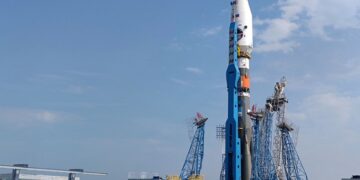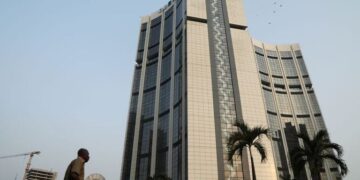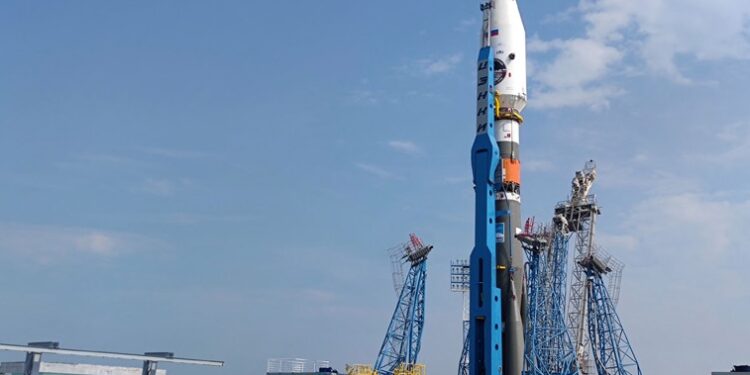By John Ikani
Russia’s space agency is turning its attention back to the moon, nearly half a century since the Soviet Union’s previous lunar landing.
This latest mission has a clear objective: to seek out frozen water near the moon’s southern pole.
To this end, Russia launched its new lunar endeavour on Friday, aspiring to achieve the first-ever soft landing on the moon’s southern pole.
Taking flight from the Vostochny Cosmodrome, the Luna-25 spacecraft embarked on its journey via a Soyuz rocket.
“The launch was a success,” confirmed Yuri Borisov, head of Russia’s space agency, Roscosmos.
According to Roscosmos, the rocket is anticipated to reach the moon in approximately five days’ time.
Afterwards, the spacecraft will spend up to seven additional days in lunar orbit, before initiating a descent to one of three potential landing sites.
Uncovering frozen water on the lunar surface
The focal objective of the Luna-25 mission involves achieving a soft landing on the moon’s southern pole—an elusive feat that has evaded past efforts by Russian, American, Chinese, Indian, Japanese, and Israeli missions.
During its stay, the craft will search for frozen water, extracting rock samples from depths of up to 15 cm (6 inches) in the moon’s regolith—the outer layer of loose surface materials.
In addition, the spacecraft is equipped with a dust monitor and a wide-angle ionic energy-mass analyzer, designed to provide insights into ion parameters within the moon’s exosphere.
Maxim Litvak, head of the planning group for Luna-25’s scientific equipment, explained, “From a scientific perspective, the paramount goal is essentially landing in an uncharted territory.”
He further noted, “Indications of ice in the lunar landing area have been observed through orbital data.”
Beyond science: Geopolitical significance
Observers, both within Russia and abroad, recognize a profound geopolitical significance underlying this mission.
“This is not solely a lunar study mission,” stated Vitaly Egorov, a prominent Russian space analyst.
“It’s a political rivalry between two superpowers—China and the USA—alongside several other nations vying for the status of a space superpower.”
Asif Siddiqi, a history professor at Fordham University in the United States, emphasized the importance of Russia’s renewed moon landing attempts after decades.
“With the last successful mission dating back to 1976, substantial stakes are attached to this endeavor,” Siddiqi remarked to Reuters news agency.
He underscored, “Russia’s lunar aspirations are interwoven with various factors. Primarily, it serves as a statement of national influence on the global stage.”
A race with India
The Luna-25 mission is racing against an Indian spacecraft, Chandrayaan-3, both striving to reach the moon’s southern pole by around August 25.
While Chandrayaan-3 plans to conduct experiments over two weeks, Luna-25 will actively operate on the lunar surface for an entire Earth year.
Reviving Russia’s space ambitions
The Soviet Union’s lunar milestone dates back to 1959. However, the space race progressively shifted toward Mars and other endeavors.
Following the Soviet Union’s dissolution in 1991, Russia encountered setbacks in sending probes beyond Earth’s orbit.
Despite facing Western sanctions, Moscow remains committed to space exploration. It has replaced European Space Agency equipment with domestically produced instruments.
Vitaly Egorov explained, “Foreign electronics are lighter, domestic electronics are heavier.”
“While scientists are tasked with studying lunar water, Roscosmos’ primary objective is landing on the moon—rekindling the expertise once held during the Soviet era and adapting it to contemporary times.”
Luna-25 is a part of Russia’s broader program envisioning the construction of a moon-based space station by 2040.
Embracing the legacy of their forebears, Russian President Vladimir Putin articulated, “Our ambition to progress persists, notwithstanding challenges or external attempts to impede our advancement.”
These words were shared last year at the Vostochny Cosmodrome, the launch site of this remarkable mission.


































